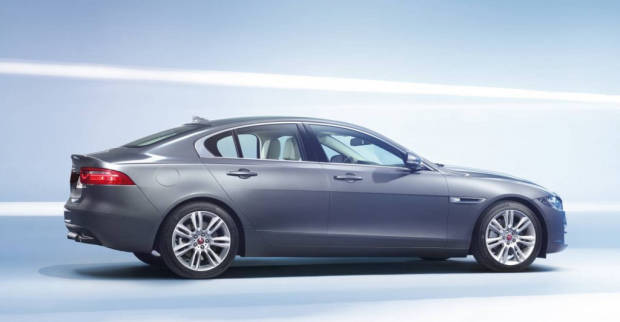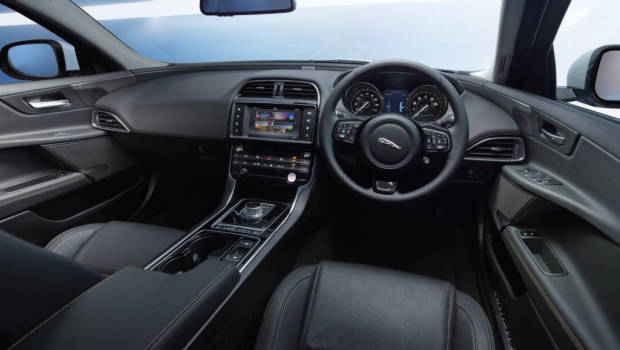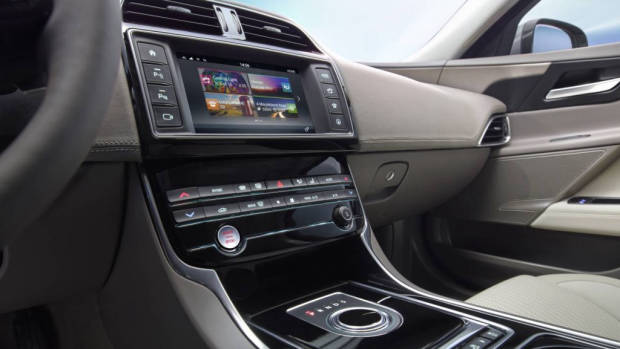-
Car Reviews
- Car News
-
Car Comparisons
Latest comparisons
- Chasing Deals
Launching September 1st, the Jaguar XE small premium sedan will undercut the BMW 3 Series on price, while facing stiff competition from the segment-leading Mercedes-Benz C-Class.
Jaguar is banking on pitching the XE successfully to Australian buyers, with the English brand down almost 17% this year. That’s an opposite trend to the strong growth of the prestige car market in Australia—the focus of an upcoming Chasing Cars analysis. The XE will need to broaden Jaguar’s share of the premium and luxury market, tiding the marque over until the Jaguar F-Pace SUV arrives next year.
Built in Jaguar’s Solihull plant in the United Kingdom, the XE’s aluminium monocoque frame is Jaguar’s lightest sedan body, starting at just over 1.5 tonnes. The XE is designed to match or better the BMW’s dynamics, with the double wishbone and integral link suspension, coupled to the rear-wheel-drive only architecture, delivering sharp handling.

Four models will make up the XE range, commencing from the Prestige base model (from $60,400), heading up to the performance-focussed XE S flagship ($104,200).
Equipment for Australia across the range is relatively generous: regardless of grade or motor, all XE models will get a 380-watt Meridian sound system with 11 speakers, an eight-inch InControl touchscreen with navigation, full leather seats which are power-adjustable, plus some advanced safety technology: autonomous emergency braking at lower speeds, automatic parking assist, and blind spot monitoring are standard fare.
Four engines will be available from launch: Jaguar Land Rover’s existing two-litre turbocharged petrol four-cylinder, in two states of tune; a brand-new Ingenium two-litre turbodiesel built in-house; and the three-litre supercharged V6 from the Jaguar F-Type.

The base Prestige and mid-spec R Sport models can be had with the diesel, or either of the two turbo four-cylinder petrols. The XE’s luxury model, called Portfolio, can only be had with the faster of the two petrols.
Speaking of the turbo fours, the base two-litre petrol, the 20t, is a 147kW, 280Nm unit propelling the XE to 100 in 7.7 seconds. A higher state of tune, called the 25t, uses the same engine with different software, ticking up to 177kW and 340Nm, quickening the sprint to 6.8 seconds.
The brand-new 20d turbodiesel four makes 132kW of power and 430Nm of torque. The run to 100 takes 7.8 seconds, but consumption is very low at 4.2L/100km on the combined cycle.
The flagship model is also the sportiest: the Jaguar XE S is exclusively available with the brand’s three-litre supercharged V6. Producing 250kW and 450Nm, the XE S sits about half-way between a BMW 335i and a BMW M3, shoving you to 100 in 5.1 seconds. The S model is $34,000 more expensive than the Portfolio it sits above, but it does bundle that superb engine, plus Jaguar’s Adaptive Dynamics driver profiling system.
Various optional equipment is on offer, including active cruise control ($1,750), a power-operated boot, panoramic sunroof, heated front and rear seats, plus a heated steering wheel.
Jaguar XE 2016: Australian price

Latest news
About Chasing cars
Chasing Cars reviews are 100% independent.
Because we are powered by Budget Direct Insurance, we don’t receive advertising or sales revenue from car manufacturers.
We’re truly independent – giving you Australia’s best car reviews.